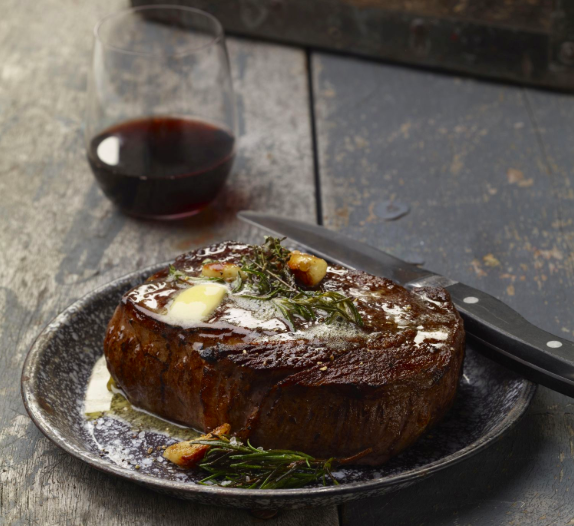Many of today’s chefs, like Dan Huebschmann at Gibson’s, are looking for proteins with the right pedigree of top-notch eating quality, sustainability and humane treatment, all while avoiding antibiotics or added hormones. And today’s guests are right in line, shopping their values right off of the menu.
But getting consistent, high-quality supply can be a challenge, in no small part because traditional marbling-based grading methods like USDA prime/select/choice don’t necessarily apply to naturally lean grassfed beef. As a result, high-quality grassfed cuts that eat very well don’t fit the criteria. With only about 3% of domestic beef production grassfed, getting supplies at scale is also a challenge.

So if you want to serve grassfed beef – and have the assurance of a consistent, high quality supply – what can you do? Australia’s MSA grading system has the answer. Here’s a quick FAQ on MSA:
What makes MSA different?
First, the system was developed from a consumer taste perspective. We started with what consumers like when they are eating beef and worked back to determine what characteristics in the beef contributed to what they liked. Over 100,000 consumer taste tests around the globe later, we had worked out the unique factors that contribute to the eating quality on a piece of beef.
It turns out that there are at least 16 different factors at play including breed, use of growth hormones (HGP), pH, age, and yes, marbling – though it only contributes to about 20% of the eating quality score. Each of the factors impacts tenderness, juiciness, flavor, and overall liking, and everyone in the beef supply chain can work to get a better result at every stage from paddock to the plate.
For example, these factors have a negative impact on eating quality:
- Use of HGPs
- Stressed animals that have a higher pH
- Older animals tend to be tougher
These factors tend to improve eating quality:
- Aging – including the wet aging age process during transport from Australia – improves eating quality
- Breed type – Angus and similar breeds fare better than tropical breeds
- Marbling – no surprise, more marbling eats better
Finally, MSA grades are specific to each cut – so instead of a single grade for an entire carcass, each primal gets its own grade based on cut and intended cooking method.
How does this help U.S. Operators?
Operators get consistency. When they buy a cut of Australian grassfed beef with an eating quality grade, they know that that cut will eat according to the quality they selected. Studies have shown that MSA is a more accurate predictor of eating quality than older systems like USDA’s prime/select/choice model. At the end of the day it’s just one less thing to worry about. Taking one more issue off that pile and letting foodservice operators serve grassfed beef with confidence helps them out.
For more information about MSA, or to join a private Facebook group of chefs interested in Aussie grassfed beef and lamb, contact the Aussie Beef & Lamb team at MLAteam@summitmg.com.

